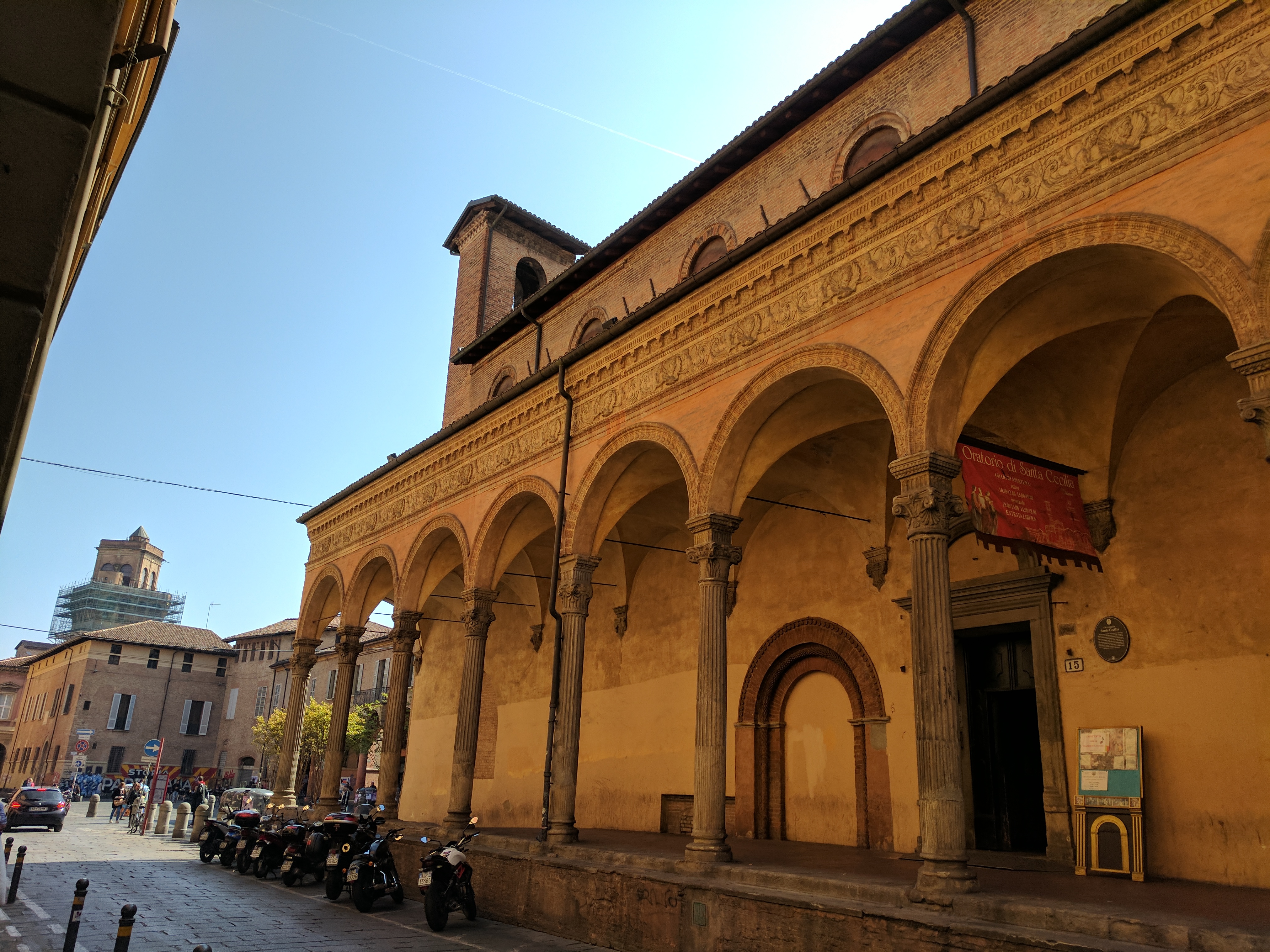Antipasto
In preparing an appetiser to Bologna , the challenge is to be selective. This Italian city is a feast of experiences, known for its food, art and music. The eclectic mix of architectural heritage is one of the first things a visitor notices upon arrival into the historic centre, which has been inhabited – in one way or another – for over a thousand years. Vibrant orange and red buildings with grated windows jostle for space with grey-brown brick edifices and wood-beamed structures, while well-dressed Italians and clusters of students vie for pavements space under the porticos. There are still some of the winding alleyways of Florence or Venice, but the roads are wider here, cars more plentiful and if you spend too long looking around while you walk, you’re liable to get hit by a bus. Around Easter, the temperature was in the low twenties, perfect for sitting in the sun with an Aperol spritz or two, planning what delicious part of Bologna to taste next.
Primo
The primo course is often pasta or risotto, which creates the foundations of the meal. In this cultural repast, the Hotel Corona D’Oro was to be our residence and our base from which to explore the city. Centrally located, only minutes from the main sights, the hotel’s sliding doors open onto a classically decorated, glass ceilinged lobby. Comfortable seating abounds and the welcome from the General Manager Michele Piazzolla and the hotel staff was warm and friendly. We were given a map and a guidebook to Bologna which, given our rather hurried decision to visit, proved indispensible. Breakfast was served on the lower ground floor, buffet style, and was, as we discovered the following morning, varied and delicious (especially washed down with a reviving double espresso).Built in the 13th century and established as a hotel in the 19th century, the recently renovated Hotel Corona D’Oro has 40 rooms (13 of which are singles,making it perfect for business as well as pleasure) and three luxury suites. Our room was on the second floor, well lit and pleasantly decorated without being ostentatious. It would have been perfectly possible to spend the afternoon in the room, bathed as it was in the golden afternoon light that seems quite particular to Italy, but we were determined to head out and feast our eyes on as many of Bologna’s sights as possible, our palates truly whetted for what the city has to offer.Secondo
Bologna’s history should be the highlight of any sightseeing plans, but a visitor may choose which museums, sights and experiences appeal to them most, rather as a diner might select the meat or fish in their secondo from a menu. The sights around the Piazza Maggiore are a good place to start; they are close together in the heart of Bologna’s collection of renaissance, baroque and medieval structures which, despite being quite walkable for the able, is the second largest historic centre in Europe. The Piazza itself is usually peppered with tourists and local students, sitting in groups on the ground, making conversation and tucking into some of the vast array of available snacks.
On one side, the Fontana di Nettuno (a 16th century statue of Neptune on a fountain) can be seen; at the time of our visit, however, he was fenced off for restoration.Also on this piazza stands the famous Basilica di San Petronio, Bologna’s main church and one of the largest churches in the world (it would have been larger that St Peter’s Basilica in Rome, but the Pope but a stop to that!). The façade remains plain as it was never completed, but the scale is quite magnificent and the interior has some beautiful frescoes across the walls and ceilings. Another notable feature is the meridian line across the floor of the Basilica, calculated by the famous astronomer Cassini, which precisely indicates our progress through the year.
Just along the road from the Piazza Maggiore are Bologna’s iconic Due Torri (two towers), which date from the 12th and 13th centuries, when the city had over 180 towers. One of the towers can be climbed, for a view of the city worth every one of the 498 steps. The other tower has a noticeable lean after being lowered in the 14th century. Other significant sights in the area include the Basilica di Santo Stefano, a collection of church buildings constructed between the 5th and 17th centuries; the Basilica di San Domenico, in which lie the remains of St Domenic and art by Arnolfo di Cambio and Michelangelo; and museums such as the Archaeological Civic Museum (MCA) and the Museum of the History of Bologna.Contorno
If you want a side dish with your visit to Bologna, don’t miss the Palazzo della Archiginnasio, the seat of Bologna’s historic university, which is the oldest in the world. Among the frescoes and displays of patrons, there is a very well preserved anatomical theatre, in which the medical researchers of the past explored the workings of the human body by dissecting corpses. Numerous tours of the city are available if you prefer to have the planning done for you, covering themes as varied as foods and wines, Jewish history and Ferraris. If you’re still feeling peckish after all this culture, many bars and restaurants offer free food in the evening as long as you buy drinks, so you can create your own food tour of Bolognese cuisine as you make your way back to your hotel.
Dolce
Fully replete from a day of sights and a couple of glasses of Aperol spritz, we arrived back at the Hotel Corona D’Oro to find that they were holding an event, free for residents to take part in – a chocolate tasting. Never ones to pass up an opportunity for learning, and especially not in this historic seat of education, we tasted several of Italy’s sweet offerings, including a divine crescent of crystallised lemon peel coated in dark chocolate and a creamy gianduja praline. It was the perfect end to a meal which had satisfied all our sensory desires and, after a delicious sleep in Hotel Corona D’Oro’s comfortable beds, we were energised for our trip back to Venice. Bologna, we will return for second helpings!
Hotel Corona D’Oro 1890
Via Oberdan, 12
40126 Bologna
Italy


